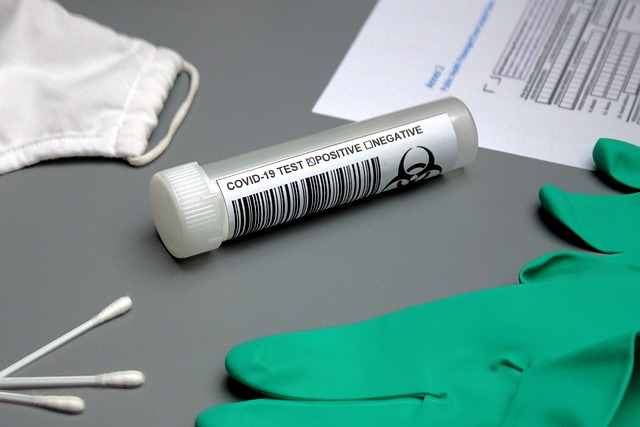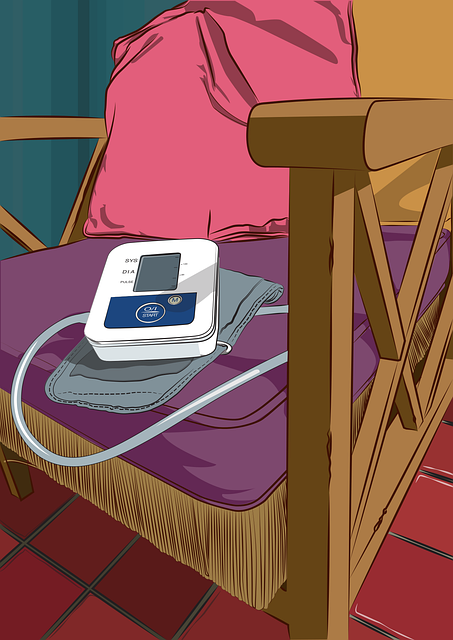Translation services for Patient Medical Records UK play a crucial role in ensuring the confidentiality and integrity of sensitive health information under GDPR. These services must employ advanced encryption, secure communication channels, and anonymization techniques to protect patient data privacy. They are required to implement comprehensive technical and organizational measures, including strict access controls, detailed audit trails, and transparent documentation practices. This ensures that every step of the translation process is accountable and legally compliant, maintaining the accuracy of medical information while fostering trust among patients and healthcare providers. The provision of informed consent forms in the patient's preferred language and the adherence to GDPR standards are essential for these services to navigate the complexities of multilingual healthcare effectively. By upholding these practices, translation services for Patient Medical Records UK support effective and secure communication across diverse linguistic regions within the healthcare sector, ensuring that patient privacy and dignity are preserved in a multicultural environment.
navigating the intricacies of GDPR compliance is paramount in the context of patient medical record translations within the UK. This article delves into the critical aspects of ensuring translated patient records adhere to General Data Protection Regulation (GDPR) standards. We will explore the essential role of translation services in this sector, key principles of GDPR as they apply to translators, and strategies for safeguarding sensitive data. From identifying data that requires protection to choosing specialized translation service providers, this guide offers comprehensive insights into maintaining compliance, secure data transfer, patient consent, anonymization techniques, staff training, and response planning in the event of a data breach. Additionally, we will examine real-world case studies that exemplify successful GDPR compliance in translated medical records, all while highlighting the importance of selecting providers with proven GDPR compliance experience for translating Patient Medical Records UK.
- Understanding GDPR Compliance in Patient Medical Record Translations
- The Role of Translation Services for Patient Medical Records in the UK
- Key Principles of GDPR and Their Implications for Translation Services
- Identifying Sensitive Data in Medical Records Before Translation
- Choosing a Translation Service Provider with GDPR Expertise
- The Importance of Secure Data Transfer Protocols in Medical Record Translation
- Consent and Patient Authorization: Best Practices for Translated Medical Records
- Anonymization Techniques to Protect Patient Privacy During Translation
- Compliance Obligations for Translation Service Providers Under GDPR
- Audit Trails and Record Keeping in Translated Patient Medical Records
Understanding GDPR Compliance in Patient Medical Record Translations

When handling patient medical records, translation services in the UK must adhere to strict data protection regulations, primarily the General Data Protection Regulation (GDPR). GDPR compliance is non-negotiable when translating sensitive medical information, as it ensures the confidentiality and integrity of personal data. Translation services for patient medical records in the UK must be well-versed in GDPR requirements, which dictate how translated records are to be processed, stored, and transferred. The regulation mandates that personal data is processed lawfully, fairly, and transparently, with specific conditions and limitations. Additionally, translation agencies handling such sensitive information are required to implement appropriate technical and organisational measures to guarantee a level of security appropriate to the risk. This includes maintaining patient confidentiality, ensuring data accuracy, and allowing patients to exercise their rights over their personal data without undue delay or obstruction. By doing so, these translation services can ensure that patient medical records are not only accurately translated but also fully compliant with GDPR, thus safeguarding patient privacy and trust while facilitating effective cross-border healthcare communication within the UK.
Navigating GDPR compliance in patient medical record translations involves a multifaceted approach that goes beyond mere linguistic accuracy. Translation services in the UK must understand the nuances of GDPR, including the principles of data minimisation and storage limitation. They must also be aware of their role as data processors, understanding the distinction between themselves and the data controllers who determine the purposes and means of processing personal data. By aligning with GDPR standards, translation services demonstrate their commitment to protecting sensitive patient information, thereby enhancing their credibility and reliability in the healthcare sector. This dedication to compliance is not just a legal obligation but also a mark of professional excellence that patients and healthcare providers can depend on.
The Role of Translation Services for Patient Medical Records in the UK

In the United Kingdom, the accurate and compliant translation of patient medical records is paramount to ensure the continuity of care and adherence to legal frameworks such as the General Data Protection Regulation (GDPR). Translation services for patient medical records in the UK play a critical role in this process. These specialized services facilitate effective communication across different languages, which is essential given the UK’s diverse population. The translation must be precise and technically accurate to convey the nuances of medical terminology correctly, avoiding any misinterpretation that could affect patient care. Moreover, with GDPR emphasizing the protection of personal data, these translation services are obliged to handle sensitive health information with the utmost confidentiality and security, ensuring that the privacy rights of patients are respected throughout the translation process. This is not just a matter of compliance but also of maintaining trust in healthcare systems and between healthcare providers across different linguistic communities within the UK. As such, any translation service involved in this domain must be well-versed in both medical and legal terminology to ensure that patient records meet the stringent requirements set forth by GDPR while remaining accessible and comprehensible to all parties involved in a patient’s care.
Key Principles of GDPR and Their Implications for Translation Services

Translation services for Patient Medical Records in the UK must adhere to the stringent data protection standards set forth by the General Data Protection Regulation (GDPR). GDPR’s key principles are central to ensuring that personal data, including sensitive health information, is handled responsibly across borders. The first principle, lawfulness, mandates that processing of personal data must be lawful, transparent, and fair. In the context of translating medical records, this means that translation services must have a valid legal basis, such as consent from the patient or compliance with a legal obligation, to process this sensitive data. The second principle, purpose limitation, dictates that data collection should be limited to what is necessary for the purposes for which it is processed. Translation services must therefore carefully consider the context and the nature of the medical information before translating it, ensuring that only the relevant information is disclosed.
Data minimisation is another cornerstone principle of GDPR, which requires that personal data should be adequate, relevant, and limited to what is necessary for the purposes for which they are processed. For translation services handling patient medical records in the UK, this means a careful selection of only the essential information to be translated, safeguarding the patient’s privacy. Accuracy, confidentiality, and integrity are paramount; translators must handle all data with the utmost care to avoid breaches that could compromise patient confidentiality. The principles of data accuracy, storage limitation, integrity, and confidentiality also demand that translation services maintain robust security measures to protect against unauthorised access or processing of personal data. By aligning their practices with these GDPR principles, translation services can provide accurate and secure translations of patient medical records, ensuring compliance and fostering trust in the UK healthcare system.
Identifying Sensitive Data in Medical Records Before Translation

When addressing the compliance of translated patient records with the General Data Protection Regulation (GDPR), a meticulous approach to identifying sensitive data is paramount. In the UK, where patient confidentiality is upheld with rigorous standards, translation services for Patient Medical Records must be particularly vigilant. Prior to translation, it is imperative to conduct a thorough review of the records to ascertain the types of personal data present. This includes not only the patient’s name and contact information but also more sensitive categories such as medical history, treatment details, and personal identifiers like NHS numbers or dates of birth. These elements must be carefully flagged as they fall under the purview of ‘special categories of data’ under GDPR, which necessitate stricter handling due to their potentially invasive nature.
The process of identifying sensitive data within medical records before translation is a multifaceted task that requires both technological and human oversight. Automated data discovery tools can assist in scanning documents for potential personal data, but it is the expertise of trained professionals who understand the nuances of medical terminology and the GDPR’s requirements that ensures accuracy. These professionals are adept at discerning where sensitive information resides, which might not be explicitly marked or obvious to software alone. They work to ensure that all patient data is handled in accordance with GDPR principles, particularly those related to data minimisation and processing, ensuring that only necessary information is translated and shared, thereby upholding the privacy and dignity of patients across the UK.
Choosing a Translation Service Provider with GDPR Expertise

When handling patient medical records, translating these documents to ensure clear communication across language barriers necessitates the utmost precision and adherence to privacy regulations. In the UK, where data protection is paramount, selecting a Translation Service Provider (TSP) that possesses specialized knowledge in GDPR compliance is non-negotiable. A TSP well-versed in GDPR’s intricacies will not only provide accurate translations of patient medical records but also guarantee the integrity and confidentiality of personal data throughout the translation process. It’s crucial to choose a provider that understands the delicate nature of healthcare information and can ensure its protection in compliance with the General Data Protection Regulation. This is particularly important given the cross-border aspects of healthcare services, where patient data may traverse different jurisdictions. A TSP with GDPR expertise will navigate these complexities, ensuring that all translations adhere to the highest standards of privacy and accuracy, thereby safeguarding sensitive patient information while facilitating effective communication and care. When vetting potential TSPs, inquire about their data protection policies, their experience with healthcare documentation, and their GDPR compliance procedures to ensure that your translated patient medical records are not only accurate but also fully compliant with the stringent requirements set forth by GDPR.
The Importance of Secure Data Transfer Protocols in Medical Record Translation

When handling patient medical records, data security and compliance with regulations such as the General Data Protection Regulation (GDPR) are paramount. The translation of these records for use across different healthcare environments, particularly within the UK, necessitates the utilisation of secure data transfer protocols to safeguard sensitive personal information. Translation services specialising in patient medical records must be equipped with robust encryption methods and secure communication channels to protect against unauthorised access or breaches during the translation process. This is not merely a technical concern but a legal requirement under GDPR, which mandates the protection of personal data and privacy rights for individuals within the UK and across the European Union. The adoption of these protocols ensures that patient records, once translated, maintain their integrity and confidentiality, allowing healthcare providers to make informed decisions based on accurate and secure information. By leveraging top-tier translation services for Patient Medical Records UK, healthcare institutions can remain compliant with GDPR while facilitating effective communication and care across linguistic and geographic boundaries.
Consent and Patient Authorization: Best Practices for Translated Medical Records

When managing patient medical records, particularly in multilingual environments within the UK, ensuring GDPR compliance through proper consent and authorization processes is paramount. Translation services for patient medical records are a critical component of this process, as they facilitate clear communication across language barriers without compromising sensitive data. To maintain GDPR compliance, healthcare providers must obtain explicit consent from patients before translating their medical records. This consent should be informed, meaning the patient fully understands what data will be translated, who will have access to it, and for what purpose the translation is needed.
The best practice involves providing a clear, concise, and understandable consent form that has been accurately translated into the patient’s preferred language. This ensures that the patient’s permission is truly informed and freely given, meeting the GDPR’s stringent requirements for consent. Additionally, it is advisable to keep a record of this consent in both the original language and the language used for translation, as evidence of compliance. Utilizing professional translation services for Patient Medical Records UK that are well-versed in the nuances of GDPR and the specific language requirements can significantly reduce the risk of non-compliance. These services often offer additional layers of security to protect personal data during the translation process, further ensuring adherence to GDPR standards.
Anonymization Techniques to Protect Patient Privacy During Translation

In an era where patient privacy is paramount, translation services for Patient Medical Records UK must employ robust anonymization techniques to safeguard sensitive health information during the translation process. Anonymization involves stripping personal identifiers from data to prevent the identification of individuals. One effective method is pseudonymization, where direct identifiers are replaced with artificial identifiers or pseudonyms. This allows for the processing of patient data while maintaining confidentiality. Additionally, translators must be vigilant in omitting or obfuscating personally identifiable information (PII) such as names, addresses, and medical record numbers. Advanced translation management systems can facilitate this by automatically scanning documents for PII before they are sent for translation. Another critical aspect is the use of secure translation memories and glossaries that protect data at rest and in transit. These tools ensure consistency across translations and help maintain the confidentiality of the records. By adhering to GDPR regulations and leveraging state-of-the-art anonymization techniques, translation services for Patient Medical Records UK can provide secure and compliant translations that respect patient privacy without compromising the integrity of the medical information being conveyed. It is imperative that these services are not only proficient in linguistic nuances but also well-versed in the legal requirements governing patient data, thereby offering a comprehensive approach to protecting patient privacy during translation.
Compliance Obligations for Translation Service Providers Under GDPR

When translating patient medical records within the UK, translation service providers must adhere strictly to the General Data Protection Regulation (GDPR) to ensure compliance. GDPR sets stringent standards for data protection and privacy, particularly when it comes to handling personal health information. Translation services for Patient Medical Records UK must implement robust technical and organisational measures to safeguard this sensitive data against unauthorised access, alteration, or destruction. This includes maintaining confidentiality agreements with translators, employing encryption for data in transit and at rest, and ensuring that only authorised personnel have access to the information. Moreover, service providers must remain transparent about their data handling practices by providing clear privacy notices and ensuring patients’ rights are upheld, including the right to access, rectify, and erase their personal data where applicable. By adhering to these compliance obligations, translation service providers can ensure that patient medical records are handled in a manner consistent with GDPR requirements, thereby maintaining trust and integrity within the healthcare sector. It is imperative that these providers stay abreast of any updates or changes in the regulatory landscape to continuously protect individuals’ personal data throughout the translation process.
Audit Trails and Record Keeping in Translated Patient Medical Records

When healthcare providers in the UK engage translation services for patient medical records, compliance with the General Data Protection Regulation (GDPR) is paramount. Audit trails within these translated documents are critical to maintaining a transparent and accountable record of a patient’s care. They provide a chronological record of every action taken on the medical data, including who translated the record, when it was translated, and any changes made during the translation process. This ensures that there is a clear, traceable history of the information’s handling, which is essential for both legal compliance and patient trust.
Record keeping in translated patient medical records also necessitates meticulous documentation of the original text, the translation provided, and any contextual nuances considered during the translation. Translation services must adhere to GDPR guidelines by safeguarding personal data, implementing appropriate security measures, and maintaining confidentiality. The records should reflect the accuracy and integrity of the original medical information, while also being accessible for subsequent healthcare professionals involved in the patient’s care. By doing so, these translation services for patient medical records UK contribute to a seamless and secure exchange of critical health information across language barriers, upholding the privacy and dignity of patients undergoing treatment in multilingual environments.
When it comes to ensuring that translated patient records are compliant with GDPR, a robust framework is essential. This article has outlined the critical steps and considerations necessary for translation service providers in the UK to adhere to these regulations, from understanding GDPR’s key principles to employing secure data transfer protocols and anonymization techniques. Choosing a translation service provider with specialized expertise in GDPR compliance is paramount, as is obtaining proper patient consent and maintaining detailed audit trails. By following these guidelines, healthcare providers can be confident that their patients’ sensitive information is protected throughout the translation process, safeguarding privacy and adhering to legal standards. It is clear that professional translation services for Patient Medical Records UK play a vital role in this process, ensuring that every patient’s data is handled with the utmost care and respect for their privacy rights.



